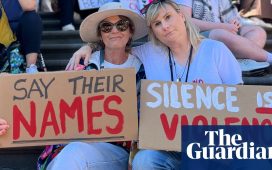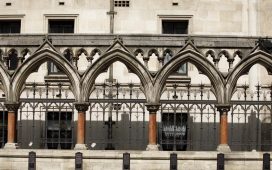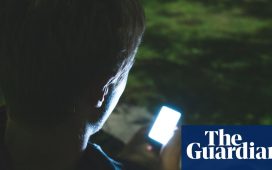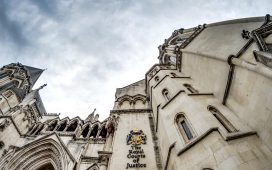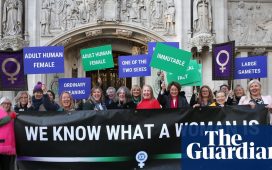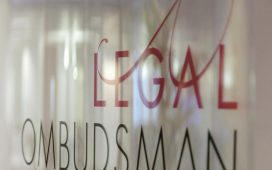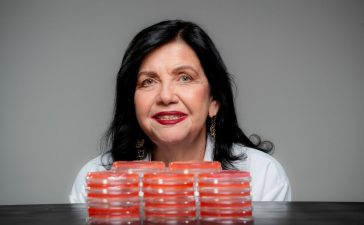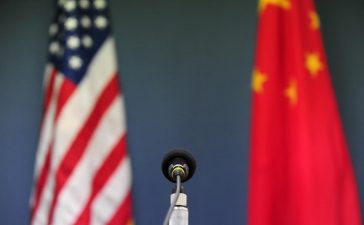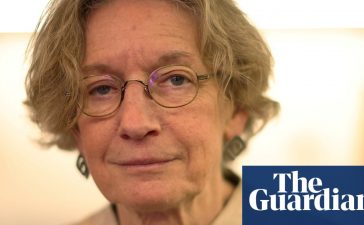Baroness Shami Chakrabarti, DJ Annie Mac and Labour MPs Nadia Whittome and Kim Johnson are among the figures lending support to a new campaign to change how rap lyrics are used as evidence in UK criminal hearings.
According to research by the University of Manchester, at least 240 people in the UK have had rap music used against them as criminal evidence in court in the last three years, including allegations of gang membership and alleged confessions of criminal activity within lyrics. High-profile recent examples include chart-topper Digga D being given a criminal behaviour order with terms that stop him from using certain names, locations and themes in his lyrics, and prosecutors attempting to use drill lyrics in a murder case against rapper Unknown T, who was later acquitted.
The issue is also currently under scrutiny in the US. Last week Ural Glanville, the judge in the racketeering case against successful Atlanta rapper Young Thug, ruled that lyrics could be used as evidence against him. Glanville told the rapper’s defence team: “They’re using the songs to prove other things your clients may have been involved in … I don’t think it’s an attack on free speech.”
“Imagine that you’re taken to court for a crime you didn’t commit, and as evidence, the prosecutors play a completely unrelated song that you wrote with your friends in an attempt to show criminal intent or behaviour,” says Whittome, MP for Nottingham East. “This is the kind of thing that’s happening. I love rap, especially grime. It’s a huge part of our culture enjoyed by so many people, so it feels particularly unfair that it is being used indiscriminately in court … it’s a practice that relies on racist stereotypes and it risks miscarriages of justice.”
Speaking to the Guardian in June about the issue, a spokesperson for the Crown Prosecution Service said it “has never prosecuted anybody solely on the basis of their involvement with drill/rap music”, but added: “Drill/rap music may be of specific relevance to the case against a suspect, in which case it may be used as evidence.”

Whittome is planning to table a bill “as soon as I can, probably sometime in the new year”, which has been drafted by campaign group Art Not Evidence. It aims to change the law to raise the threshold for rap and other forms of creative expression to be admissible as evidence.
Art Not Evidence was created at the end of 2022 by a group of lawyers, academics and music industry professionals who also want to constrain the use of police officers as rap experts to interpret evidence against a defendant, and start a cultural attitude change where styles such as drill and grime are seen as more valid forms of art.
They have written an open letter that can be signed by anyone from today, with notable signatories already including DJ Annie Mac, Baroness Shami Chakrabarti, Kim Johnson (Labour MP for Liverpool Riverside), and Eithne Quinn, lead on the University of Manchester’s Prosecuting Rap project.
Barrister Keir Monteith, one of the core members of the Art Not Evidence campaign, describes a “crucial need for a change in the way rap music is used in serious, criminal trials”.
“Almost a decade ago I was in a murder case,” he explains. “The prosecution had forensics, CCTV, witnesses, photographs. Then, midway through the trial they presented a further statement from a police officer from the case and it was about my client’s alleged rapping and how he was presented in a video. I nearly fell off my chair.
“As a criminal barrister, I couldn’t believe that prosecution in a murder case was relying on music … rap is music, it’s lyrics, it’s freedom of speech. It’s art and not evidence. In a murder case, we should be focusing on forensics, eyewitnesses, on CCTV.”
Baroness Shami Chakrabarti, a signatory of Art Not Evidence’s open letter, believes that the use of rap music in criminal cases has potential to create a “triple abuse of power”.
When this evidence is used wrongly, she says “it assumes criminality from cultural influences just because they like that type of music; it’s like people making and listening to rebel songs to automatically be assumed members of the IRA … it’s as ridiculous as it would be to infer that I was some sort of mafioso because I enjoyed the Godfather movies. It’s totally ludicrous and dangerous for public confidence, and particularly likely to alienate young Black people.
“The second abuse is the racist dimension and stereotyping. The third is the idea that the police will style themselves as expert witnesses in this sort of pseudo-science of relating music to criminality.”
Art Not Evidence’s aim is to make the use of rap lyrics, video material, or related content inadmissible, unless the material is directly linked to other forms of evidence such as DNA, CCTV footage, forensic evidence or eyewitness testimony. They want the correlation of rap material and other evidence to be “heavily examined” before being presented to a jury.
In another murder case, “the prosecution played a rap music video as part of the evidence,” explains Monteith. “It was completely irrelevant and highly prejudicial. In that particular case, the judge invited the jury to come to the conclusion that if a defendant was in that video, and had possession of that video, that they were in a violent gang. It’s totally wrong.”
Abenaa Owusu-Bempah of the London School of Economics is also calling for “stricter rules” on the relevance of lyric-based evidence. “We’re finding that [rap-based-evidence] is not getting scrutinised thoroughly enough,” she says, “which means that music, lyrics and videos which have nothing to do with the offence that the person is charged with is being used as evidence for things such as gang association, their motives for crime.”
Campaign founder Elli Brazzill explains that they get some criticism from people arguing that rap and drill music and videos contain violent words and imagery. “People say to us, ‘oh, but in drill music they name names and they say things’, and we’re not denying that it happens. We just want there to be a more rigorous process in checking it’s all relevant in the case … and not used in isolation.”
Owusu-Bempah agrees, saying: “Much of rap is fiction, dramatisation and hyperbole, so we need to make sure that if it’s used it’s a reliable statement of fact.”
But she argues this music is sometimes used flippantly by police and prosecutors, including via interpretations by police officers who are called on by the prosecution as rap experts.
“The music is sometimes created months or years before the alleged crime … The word ting is used a lot, which is short for ‘thing’ and is often used to describe girls, but in some of these cases they infer that ting means gun – when that probably wasn’t what was meant in the lyrics.”
Speaking to the Guardian in June, Michael Railton, who led a Met police initiative to prepare officers as expert witnesses, said he and the officers were held to a “gold standard” of independence and that it was “never the intention” to police a single community or group. He added: “All I want [rap artists] to do is to be able to put out music which is socially responsible and that doesn’t play into the further perpetuation of the downward spiral of their community and themselves.”
The Art Not Evidence campaign shares a similar ethos to the Art on Trial: Protect Black Art campaign in the US, which has been backed by the likes of Jay-Z and Megan Thee Stallion. In September 2022, California outlawed the use of rap lyrics in trials.
“If they can do it in America with their complicated system and many states – not that our system isn’t complicated too – then we can as well,” says Brazzill, who encourages the industry to take a keener interest in the issue. “There’s a lot of people in the music industry living their lives and making money off rap and drill, but when it comes to its relationship with the law then suddenly it’s silent.”

